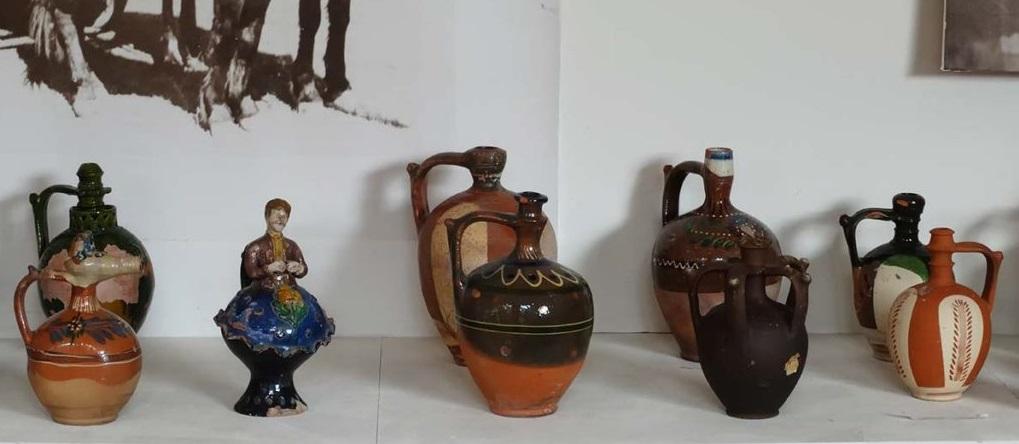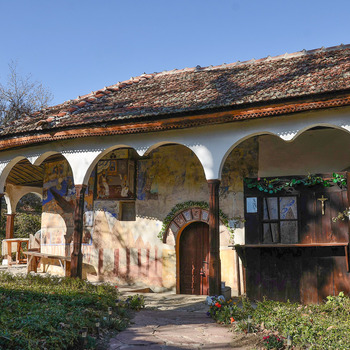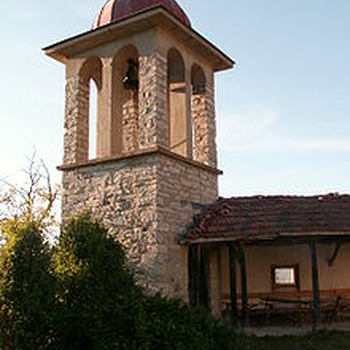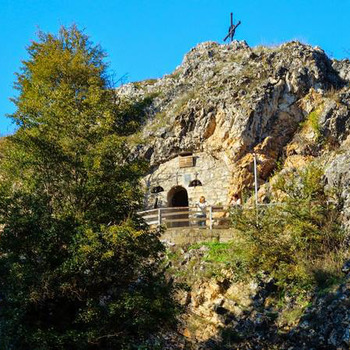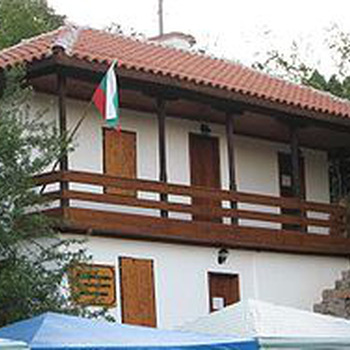Museum collection Businska ceramics - Busintsi village
Overview
The Museum of Ceramics in the village of Busintsi was established as an original ethnographic complex with a museum and creative base for applied artists in 1982. It includes an ethnographic exhibition, a demonstration ceramic studio, a restored traditional house with an authentic pottery workshop and a hotel. The exposition occupies two halls, in which are arranged over 1300 pitchers, jars, pots, cups, bowls, pots of more than 1000 masters from the village and the surrounding area. An authentic kiln, which is more than a hundred years old, has also been preserved. In recent years, the museum has hosted national and international plein airs of ceramic artists who create modern art inspired by the old Busin masters. Busintsi is one of the oldest centers of pottery in Bulgaria and was its most important old traditional centers. The Busin Ceramic School was established here, whose roots are lost far in time. In the famous "Busin Gospel" from the XVI - XVII century, which is now kept in the crypt of the church "St. Alexander Nevsky ", there is a note from 1784 for Veliko Granchar, who donated to the church" philo basma in memory ". During the Revival the craft became the main livelihood of the village, reaching a real boom at the end of the XVIII and especially in the XIX century (over 300 workshops with about 1500 potters), when the whole industry developed and many "daughter" centers began to swarm ( Samokov, Berkovitsa, Razlog, Nevrokop), a pottery guild was established as a professional association. At that time, a potter's wheel was spinning in almost every house in Busin, and local craftsmen distributed their products throughout northwestern Bulgaria. Despite the rule, the Busin masters traveled freely, and the Turkish authorities and Bulgarian municipalities helped them in this endeavor. The fame of the Busin ceramic school spreads all over the country and beyond. Busin vessels travel to Syria, Egypt, Tunisia, etc., deliver them to Constantinople in the Sultan's Palace Topkapi. At the end of the 19th century, Konstantin Irechek in his "Journeys through Bulgaria" pointed out the village as a center of a special pottery industry, which is very old in form and ornamentation. The Ethnographic Museum "Businska Ceramics" was built in the period 1978-1983. The main initiator of its creation with a contribution to the popularization of Businska ceramics is one of the most prominent hereditary Businska masters Petar Gigov. The Busina pottery school is distinguished above all by the magnificent sculptural construction of the figural compositions on the ritual vessels. All products are richly colored mostly in different shades of green and yellow, with rich ornaments. The bead products have an unusually comprehensive functional purpose and typological variety, often quite atypical for pottery. As copper-making was not particularly developed in the area, the potters met all the needs of the people's way of life, making from clay even vessels for brewing brandy and water pipes. Original are the pitchers with two male figures, which are used as ritual vessels for wine at weddings. Particularly characteristic of the Busin school are the so-called rokatki - dishes for carrying one or two dishes and the so-called. okanicheta - ritual small jugs for wine and brandy, as well as krondira - a unique jug with a hole in the middle. The mixing of clay is one of the technological secrets of the masters, who made their products ring when knocked and used only local ores and materials for dyes. This determined the color range of the bead pottery - yellow, green and red. Among the countless masters of this school in history are preserved the names of the famous Kostadin Gigov and Peter Gigov nicknamed Mauka. Master Kostadin Gigov is a prominent Busin potter, who brilliantly presented the Busin school at the First Bulgarian Exhibition in Plovdiv in 1892, received the first prize and a sum of money to build a nice house in the village, which today is declared a cultural monument. of famous cronde vessels with figures "Serb", "Greek", "Albanian", "Romanian", a figure of Tsar Ferdinand and others. His son is Peter Gigov (1915 - 1991). He also gained international fame and glorified Bulgaria around the world with Busin ceramics. His works are in the possession of the Louvre, the Museum of Man in Paris, museum collections in the United States, Japan and Russia. The Bulgarian Cultural Center in Paris opens on April 28, 2008 the exposition of original Bulgarian ceramics from the village of Busintsi created in the village from the 17th century until today. Most of the exhibits are the work of the famous Busin master Petar Gigov.
Recommended
- Tran Monastery St. Archangel Michael
- Yablanishko gorge
- The gorge of the river Erma
- Zabelski Monastery St. Dimitar
- Vrabchanski waterfall
- Yogurt Museum


 Bulgarian
Bulgarian Romanian
Romanian